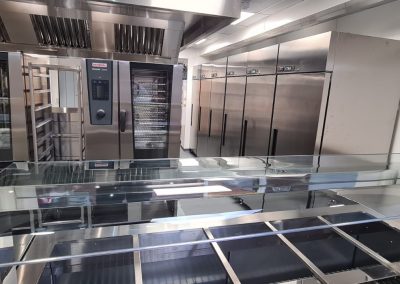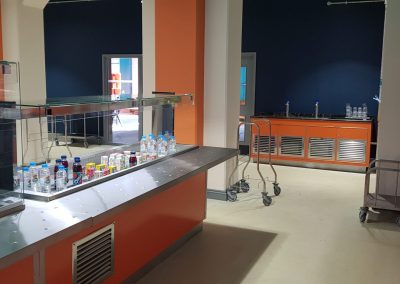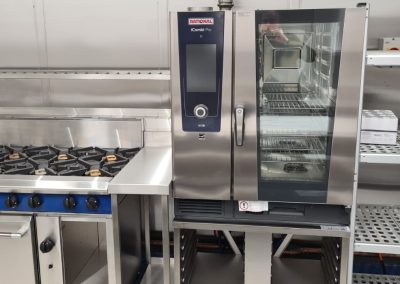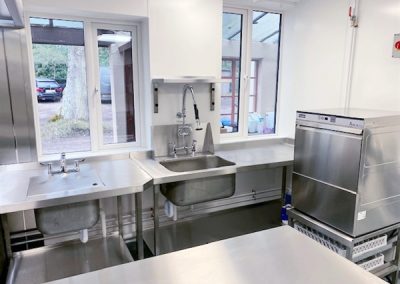Everyone will have different ideas on how best to design their commercial kitchen but if you are looking for specific rules before you start then there is no hard fast rule. However, you will need to know about the common different arrangements and current industry specific legislation:-
Ergonomic Configuration
This arrangement is based around what is most comfortable and efficient for the Chef (not to be messed with) and his staff. An example of this is having an under-counter freezer next to a large deep fryer. It may not be the most energy efficient solution to have a freezer next to a heat source such as a fryer, but it means the staff can move certain foods from one to the other really quickly and improves operator efficiency.
Assembly Line Configuration
This is best for restaurants or establishments that produce high volumes of the same foods (e.g. Pizza Takeaway or a production kitchen). This layout is configured in the order of use and the equipment is in a line or linked together.
You may for example have the refrigerator, dough shaping, prep table and then the oven, with members of staff for each section with their own specific role to play within the production line.
Zone Style Configuration
This layout is where the kitchen is divided on different blocks. You will have blocks for the following:-
- Food preparation
- Refrigeration/Storage
- Cleaning/Washing area
- Prime Cooking
- Service Pass
Island Style Configuration
This is similar to the above layout but will usually have one main block in the middle for cooking equipment in the middle and the other areas such as food preparation, storage and kitchen to servery move on the outer sides. It may be that you choose to have a different area in the middle such as food preparation.
In Summary
You will have to decide your best layout depending on the type of kitchen equipment you have. Whatever layout you decide consider the following points before making your decision:-
- Space
- Number of kitchen employees and their mobility
- Ergonomics
- Energy Efficiency
- Health & Safety
- Environmental and Health stipulations
- Location of equipment to suit front of house operation
- Flexibility




